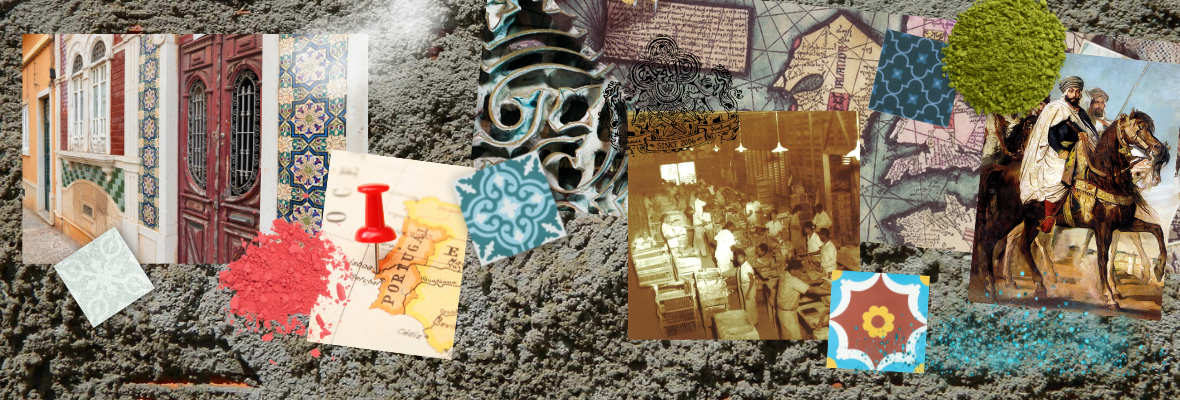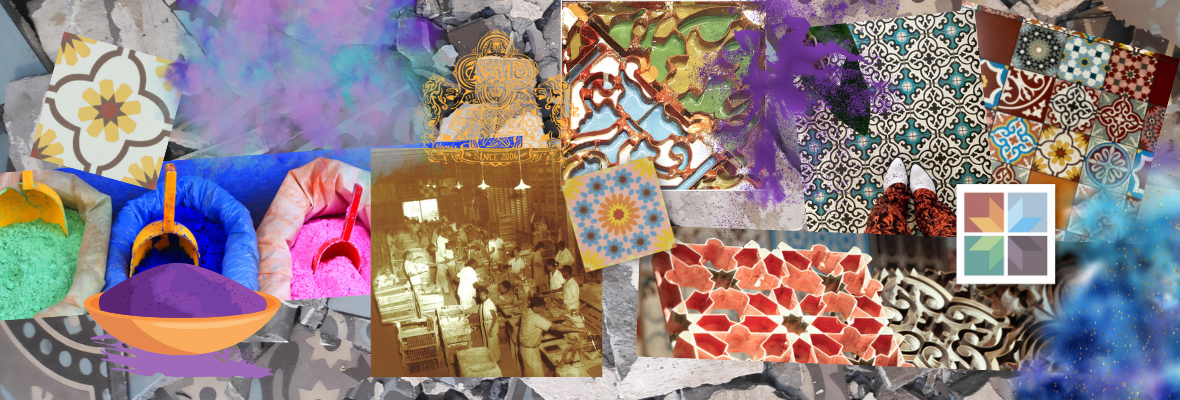-
Now, at the beginning of the twenty-first century, the demand for authentic and sustainable products is increasing. And hence, also the demand for cement tiles, which are known in the Netherlands under the name Portuguese tiles, cement tiles or mosaic tiles. The renewed enthusiasm for this ‘green’ product may be interpreted
as a reaction to the current technological era, in which industrially produced materials are often a strain on the environment. During the production of cement tiles, no
heating is involved. The materials used are environmentally friendly and sustainable, just like many centuries ago. That’s why more and more professional designers and consumers like to use cement tiles as a high quality and decorative element. They are reminiscent of times gone by, full of beauty and exclusivity.
Cement, pigment, water, time, and a lot of patience. Whoever has this in abundant, could theoretically make a decorated cement tile. That is precisely what the Moors used to use ten centuries ago, and in the same method is still used in cement tile factories today. The production technology and the cement itself have developed in time and been perfected in the course, but the basic method is still the same traditional and environmentally friendly craftsmanship.
In 711, the Moors invade Spain. Several decades later, they conquer the whole of Spain and southern Portugal. They introduce Islam, and a high standing Moorish-Spanish culture develops. Especially in architecture, the many centuries of domination by the Moors is clearly visible, especially in cities like Córdoba, Seville, Granada and Malaga. The Alhambra Palace in Granada is one of the finest examples of Moorish-Arab architecture in Europe. The walls of this building are beautifully decorated with numerous multi-coloured tiles.
FIFTEENTH CENTURY: After the Moors are finally expelled from Spain in 1492, the decorated coloured cement tiles fall from grace. This will only change when in the nineteenth century numerous archaeological finds in Europe’s encourage interest in ancient civilisations and cultures. One of these cultures is the early Arab culture. In Islamic architecture of that time, we see a lot of vibrant colours and patterns and designs based on geometry, calligraphy, flowers and plants. The basis of these designs is adopted by new designers in the Mediterranean, and often slightly adapted to each country’s own cultural flavour.
Art noveau: At the end of the nineteenth century, the use of cement tiles is especially popular among the high society of Barcelona. It is the heyday of Art Nouveau, and Barcelona plays a big role with Antonio Gaudí as the great predecessor in the field of design and architecture. Like other architects and designers, Gaudí also designed his own cement tiles; apple green hexagonal tiles, which he used for the interior of the Casa Mila in Barcelona. Cement tiles are increasingly popular during this period, first in the rest of Spain and then in other southern European countries.
Twentieth century: At the beginning of the twentieth century’s, cement tile are the most popular flooring in the Mediterranean region: North Africa, France, Spain, Portugal and Italy. From here, the tiles are spread to the former European colonies, and eventually they can be found all over the world. This heyday only comes to an end in the fifties of the last century, when more and more industrial and cheaper products become available, and people switch to granite or ceramic or plastic tiles.
Now, at the beginning of the twenty-first century, the demand for authentic and sustainable products is increasing. And hence, also the demand for cement tiles, which are known in the Netherlands under the name Portuguese tiles, cement tiles or mosaic tiles. The renewed enthusiasm for this ‘green’ product may be interpreted
as a reaction to the current technological era, in which industrially produced materials are often a strain on the environment. During the production of cement tiles, no
heating is involved. The materials used are environmentally friendly and sustainable, just like many centuries ago. That’s why more and more professional designers and consumers like to use cement tiles as a high quality and decorative element. They are reminiscent of times gone by, full of beauty and exclusivity.












